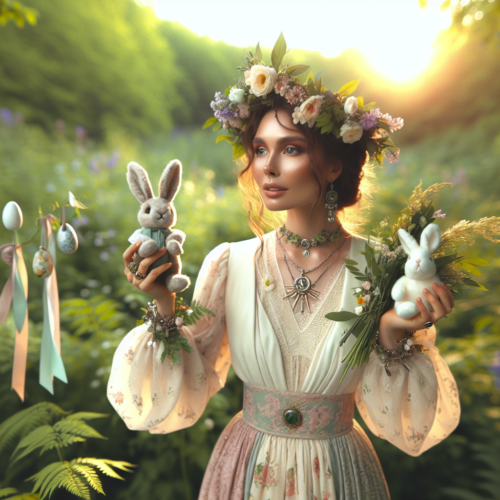Ēostre is the goddess of spring, dawn, and renewal. Her name, derived from the Old English and Old High German languages, is etymologically linked to the word for “east,” symbolizing the direction from which the sun rises, heralding the arrival of light and the end of the dark, cold winter.
Ēostre is often depicted as a radiant and youthful deity, embodying the vigor and freshness of spring. She is associated with the rejuvenation of the earth, as flowers bloom and wildlife awakens under her gentle auspices. Her symbols include the hare, a creature known for its fertility and often seen as a representation of the natural abundance and rapid growth characteristic of her season.
Eggs, another potent symbol of fertility and new beginnings, are also linked to Ēostre, further emphasizing her role in the renewal of life.

While specific myths detailing Ēostre’s exploits are sparse, her presence is felt in the celebration of the spring equinox, a time when her influence is most visible. The festival in her honor involves various rites and rituals celebrating the earth’s awakening and the balance of day and night, marking a period of significant importance in the agricultural calendar.
Ēostre’s legacy is particularly notable for its suspected influence on modern Easter traditions. The Christian festival of Easter, which celebrates resurrection and renewal, coincides with the time of year dedicated to Ēostre and incorporates many symbols associated with her, such as eggs and rabbits, which are emblematic of fertility and new life.
This syncretism highlights the enduring impact of Ēostre’s imagery and themes, which have transcended religious transformations to remain relevant in contemporary celebrations.
Some scholars argue that Ēostre was a localized deity or possibly a broader symbol of spring and dawn, while others speculate that she might have been a more significant pan-Germanic goddess.
Ēostre remains a figure shrouded in mystery, yet her association with the most vibrant and life-affirming aspects of the natural world speaks to her profound resonance in the cultural and spiritual life of the Germanic peoples. As the goddess of dawn and spring, Ēostre symbolizes hope, renewal, and the endless cycle of life, themes that continue to inspire and resonate across cultures and generations16
